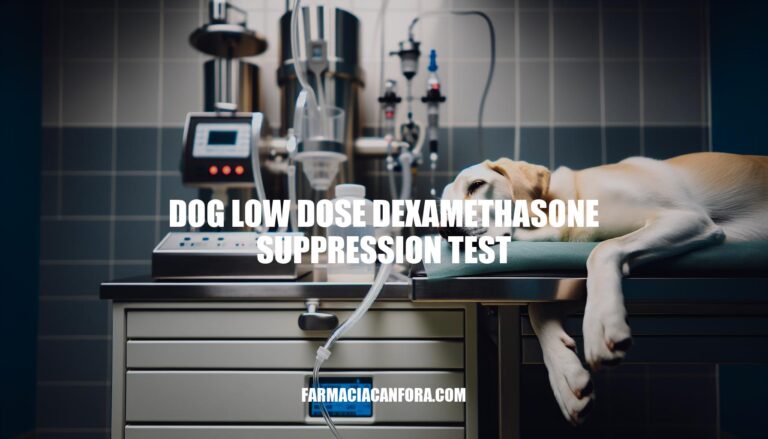


The low dose dexamethasone suppression test (LDDS) is a diagnostic tool used in veterinary medicine to identify Cushing’s disease (hyperadrenocorticism) in dogs. This test measures the body’s cortisol response to an injection of dexamethasone, a synthetic steroid. By evaluating how cortisol levels change, veterinarians can determine if a dog has Cushing’s disease and often identify whether the condition is pituitary or adrenal in origin. This test is crucial for accurate diagnosis and effective treatment planning, ensuring better health outcomes for affected dogs.
The primary purpose of the low dose dexamethasone suppression test in dogs is to diagnose hyperadrenocorticism (Cushing’s disease). This test helps determine if a dog has Cushing’s disease by measuring how well the dog’s adrenal glands respond to the synthetic steroid dexamethasone. It involves taking blood samples before and after administering dexamethasone to see if cortisol levels are appropriately suppressed.
Here’s the step-by-step procedure for the dog low dose dexamethasone suppression test:
The collected blood samples are then analyzed to measure cortisol levels.
The low dose dexamethasone suppression test (LDDS) is used to diagnose hyperadrenocorticism (Cushing’s disease) in dogs. Here’s how the results are interpreted:
Normal Result: Cortisol levels should drop significantly after the administration of dexamethasone. Typically, cortisol levels fall below 40 nmol/L at 8 hours.
Abnormal Result: If cortisol levels do not drop sufficiently, it indicates hyperadrenocorticism. Specifically, cortisol levels remain above 40 nmol/L at 8 hours.
This test helps differentiate between normal and abnormal adrenal function in dogs.
The low dose dexamethasone suppression test (LDDST) for dogs offers several advantages:
Reliability: The LDDST is highly sensitive, with an overall sensitivity around 96.6%. It is considered the most reliable screening and diagnostic test for hyperadrenocorticism (Cushing’s disease) in dogs.
Cost-Effectiveness: Compared to other diagnostic tests, the LDDST is relatively cost-effective. It involves fewer resources and less time, making it a practical choice for many veterinary practices.
Differentiation Capability: The LDDST can help differentiate between pituitary-dependent and adrenal-dependent hyperadrenocorticism about 65% of the time. This is crucial for determining the appropriate treatment plan.
Non-Invasiveness: The test is minimally invasive, requiring only blood samples at specific intervals after the dexamethasone injection.
These factors make the LDDST a preferred choice for diagnosing Cushing’s disease in dogs.
Here are the limitations of the low dose dexamethasone suppression test (LDDS) for dogs:
The low dose dexamethasone suppression test (LDDS) is a diagnostic tool used to identify Cushing’s disease (hyperadrenocorticism) in dogs. It measures cortisol levels before and after administering dexamethasone, a synthetic steroid.
The test involves collecting blood samples at 0, 4, and 8 hours after the injection. Cortisol levels should drop significantly after dexamethasone administration, typically below 40 nmol/L at 8 hours. Abnormal results indicate hyperadrenocorticism.
The LDDS is highly sensitive (96.6%) and cost-effective, making it a preferred choice for diagnosing Cushing’s disease in dogs. However, it has limitations, including false positives due to stress or medications, false negatives in some cases of pituitary-dependent hyperadrenocorticism, non-specific results, and influence of population characteristics.
Additional testing may be required to confirm the diagnosis.